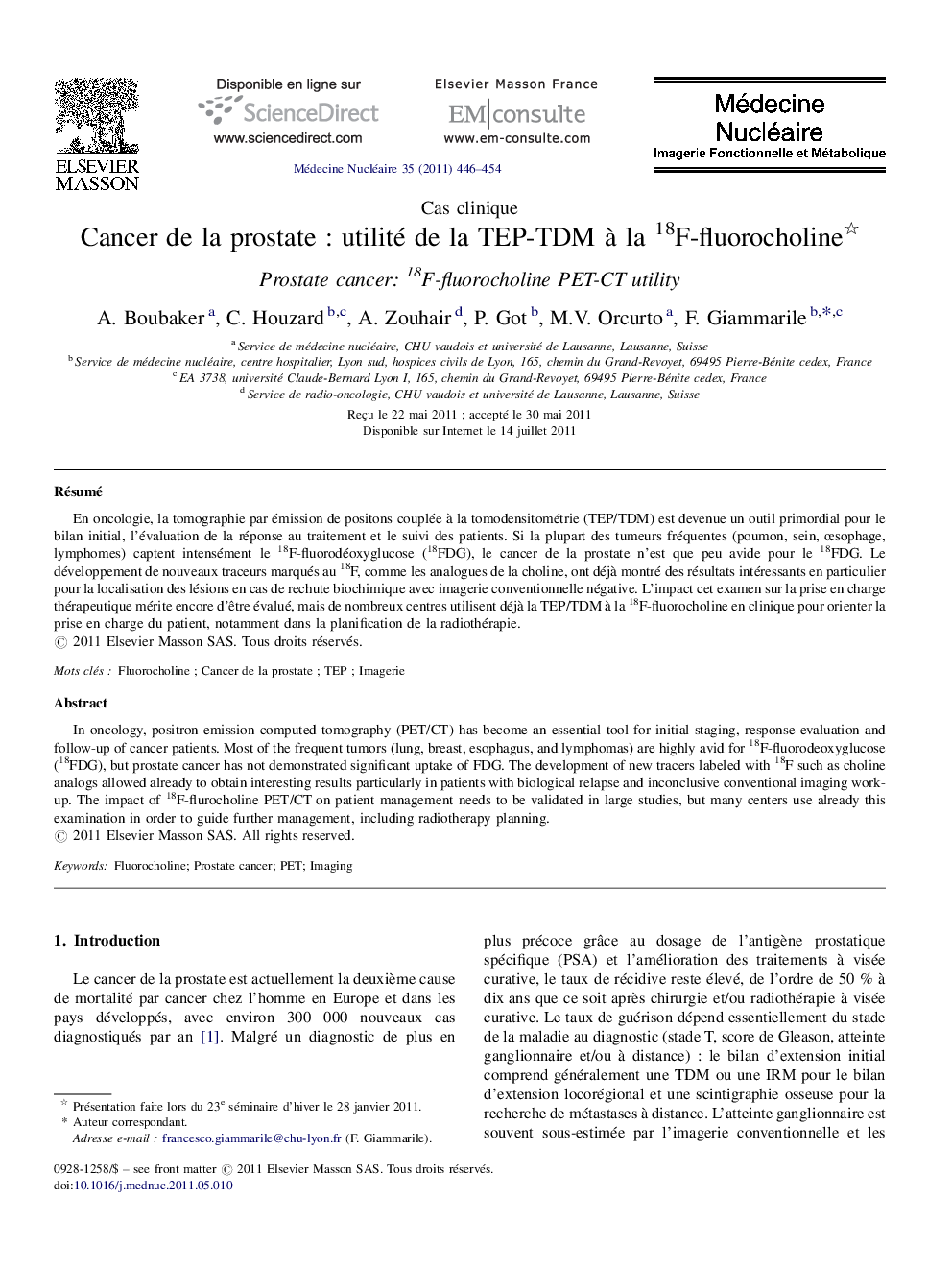| کد مقاله | کد نشریه | سال انتشار | مقاله انگلیسی | نسخه تمام متن |
|---|---|---|---|---|
| 4244263 | 1283380 | 2011 | 9 صفحه PDF | دانلود رایگان |

RésuméEn oncologie, la tomographie par émission de positons couplée à la tomodensitométrie (TEP/TDM) est devenue un outil primordial pour le bilan initial, l’évaluation de la réponse au traitement et le suivi des patients. Si la plupart des tumeurs fréquentes (poumon, sein, œsophage, lymphomes) captent intensément le 18F-fluorodéoxyglucose (18FDG), le cancer de la prostate n’est que peu avide pour le 18FDG. Le développement de nouveaux traceurs marqués au 18F, comme les analogues de la choline, ont déjà montré des résultats intéressants en particulier pour la localisation des lésions en cas de rechute biochimique avec imagerie conventionnelle négative. L’impact cet examen sur la prise en charge thérapeutique mérite encore d’être évalué, mais de nombreux centres utilisent déjà la TEP/TDM à la 18F-fluorocholine en clinique pour orienter la prise en charge du patient, notamment dans la planification de la radiothérapie.
In oncology, positron emission computed tomography (PET/CT) has become an essential tool for initial staging, response evaluation and follow-up of cancer patients. Most of the frequent tumors (lung, breast, esophagus, and lymphomas) are highly avid for 18F-fluorodeoxyglucose (18FDG), but prostate cancer has not demonstrated significant uptake of FDG. The development of new tracers labeled with 18F such as choline analogs allowed already to obtain interesting results particularly in patients with biological relapse and inconclusive conventional imaging work-up. The impact of 18F-flurocholine PET/CT on patient management needs to be validated in large studies, but many centers use already this examination in order to guide further management, including radiotherapy planning.
Journal: Médecine Nucléaire - Volume 35, Issue 8, August 2011, Pages 446–454